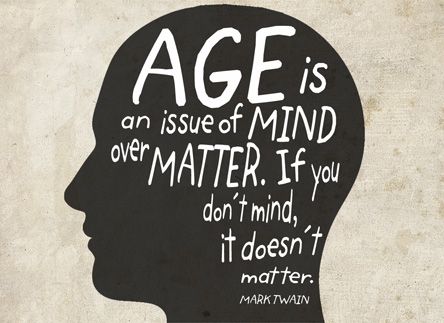A mature mind. . .
Is a Terrible Thing to Waste
by Michael C. Patterson

Our best hope for solving the myriad challenges our society faces is to leverage the full creative potential of our human minds. We need to combine the vitality and optimism of young minds with the tempering influence and wisdom of experienced minds to optimize the creative process.
Too often, however, mature minds are excluded from the creative process because of ageist stereotyping. In part, negative stereotyping and ageist discrimination are reinforced by the fact that too many older minds do lose some of their power. In many cases, this needless waste of creative brainpower results from premature aging and preventable age-related diseases.
Fortunately, emerging brain and mind sciences are proving that cognitive decline with age is far from inevitable. While efforts to find a drug that “cures” dementia have thus far failed miserably, researchers have made great progress in identifying the behavioral factors that put older minds at risk. Just as important, they have identified lifestyle approaches that can effectively prevent the age-related diseases that contribute to dementia.
Fortunately, emerging brain and mind sciences are proving that cognitive decline with age is far from inevitable. While efforts to find a drug that “cures” dementia have thus far failed miserably, researchers have made great progress in identifying the behavioral factors that put older minds at risk. Just as important, they have identified lifestyle approaches that can effectively prevent the age-related diseases that contribute to dementia.
Roger Anunsen and I have been monitoring the science of brain health for over two decades. We created MINDRAMP Consulting & Coaching to translate the science into plain language and to develop programs (for individuals and organizations) that help people adopt the behavior and lifestyle modifications that prevent dementia. Our vision is a world in which increased longevity means more years of health, happiness and fulfillment, not more years of decline, disease and debility. We call this the quest for “Qualongevity,” a contraction of longevity + quality of life.
The MINDRAMP Method© protects cognitive potential by teaching and coaching people (of all ages) to strengthen their brains and to manage their minds. It is a risk-management approach. Risky behaviors are identified then replaced with protective behaviors.
To get a sense of what you can do to protect and nurture your mind, let’s take a quick look at risks and protections associated with eight critical lifestyle areas — what we call the CogWheels of Brain Health. While these will likely be familiar to you, we know that sometimes it’s hard to do what we know is good for us. Use this list to check on how you’re doing during these challenging times.
MINDRAMP’S Essential Cogwheels of Brain Health: Risks & Protections
- Physical Exercise: A sedentary lifestyle is risky. Movement is protective. Move more.
- Mental Stimulation: Mental stagnation is risky; it kills brain cells. Challenge and novelty build stronger brains; learning and creativity expand mental capacity.
- Social Engagement: Loneliness and abusive relationships are toxic. Our brains and minds grow when we feel safe and nurtured by supportive family, friends and acquaintances.
- Stress Management: Chronic, unrelieved stress is toxic. “Eustress” is short-term stress that is challenging, motivating and beneficial; it promotes growth, development and resilience.
- Diet & Nutrition: Junk food injures the brain. Well-balanced, plant-based diets provide the brain the fuel it needs to operate at optimal capacity.
- Quality Sleep: Sleep disorders like insomnia and apnea damage the brain. During each night of quality sleep, the brain promotes learning and removes damaging metabolic waste materials.
- Medical Conditions: Medical conditions, like cardiovascular disease, metabolic syndrome and chronic inflammation are risk factors for dementia. Anything that keeps the body healthy promotes brain health.
- Environmental Factors: Impoverished environments compromise brain health and mental growth. Enriched environments nurture and stimulate health, growth and development.
Resources
- To learn more about the MINDRAMP Method explore our website at www.mindramp.org
- Listen to our series of MINDRAMP Podcasts that are available on most podcast platforms or on the Podcast page on our website.
- I ran an earlier iteration of AARP’s Staying Sharp program (2001 – 2009) and Roger served as a consultant. Check out the current versions of Staying Sharp for information on brain health.
- The Staying Sharp program was a partnership with the Dana Alliance for Brain Initiatives, which is a great source of information about neuroscience advances translated for the general public. Click on the “Explore Neuroscience” from their drop-down menu.
- Dr. Sarah McKay is an Australian neuroscientist who has a useful blog. She provides a much-needed focus on women’s brains.
- Most early brain research, unfortunately, was conducted on white men. That trend is now changing, and we are learning that there are some significant differences between men’s and women’s brains. A good book on the subject is THE XX BRAIN by Lisa Mosconi who is the director of the Women’s Brain Initiative at Weill Cornell Medical College.
- The Wise Brain Bulletin brings you skillful means – from psychology, neurology, and contemplative practice – for personal well-being, relationships, work, and spiritual development.
© 2020 All Rights Reserved. MINDRAMP Consulting, LLC
